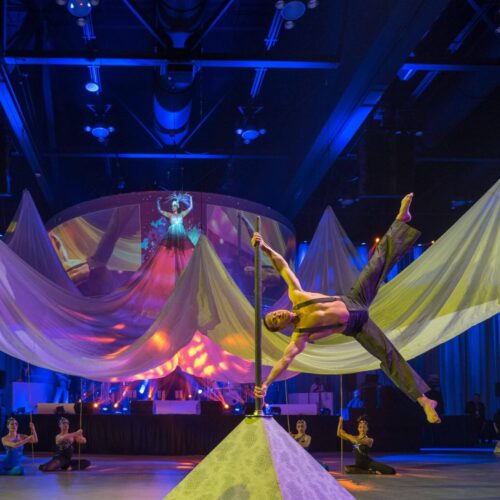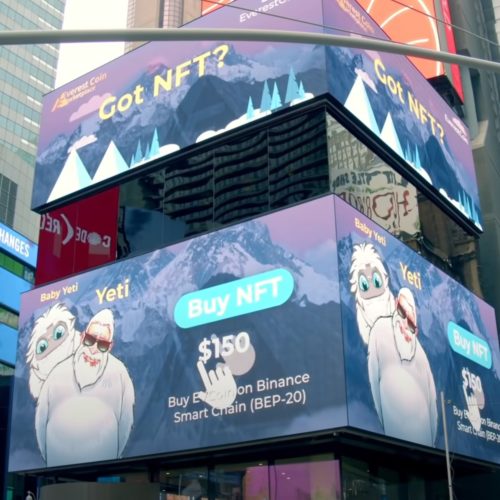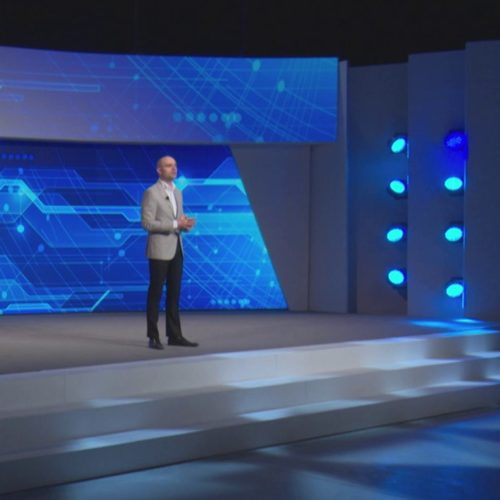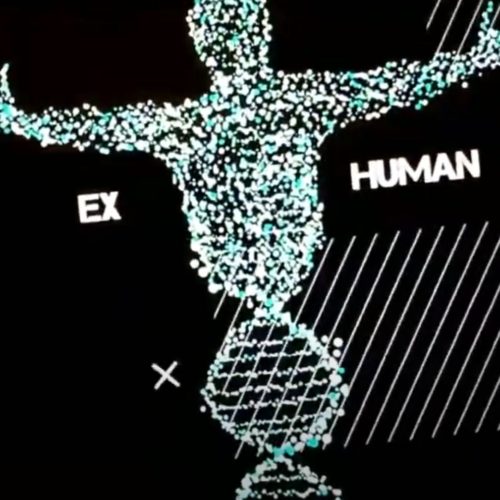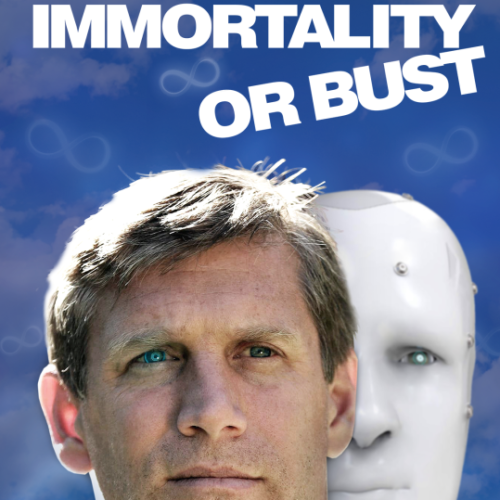Why the Future adds 0 and what “Conversations with the Future” is about
Socrates / Op Ed
Posted on: January 31, 2017 / Last Modified: January 31, 2017
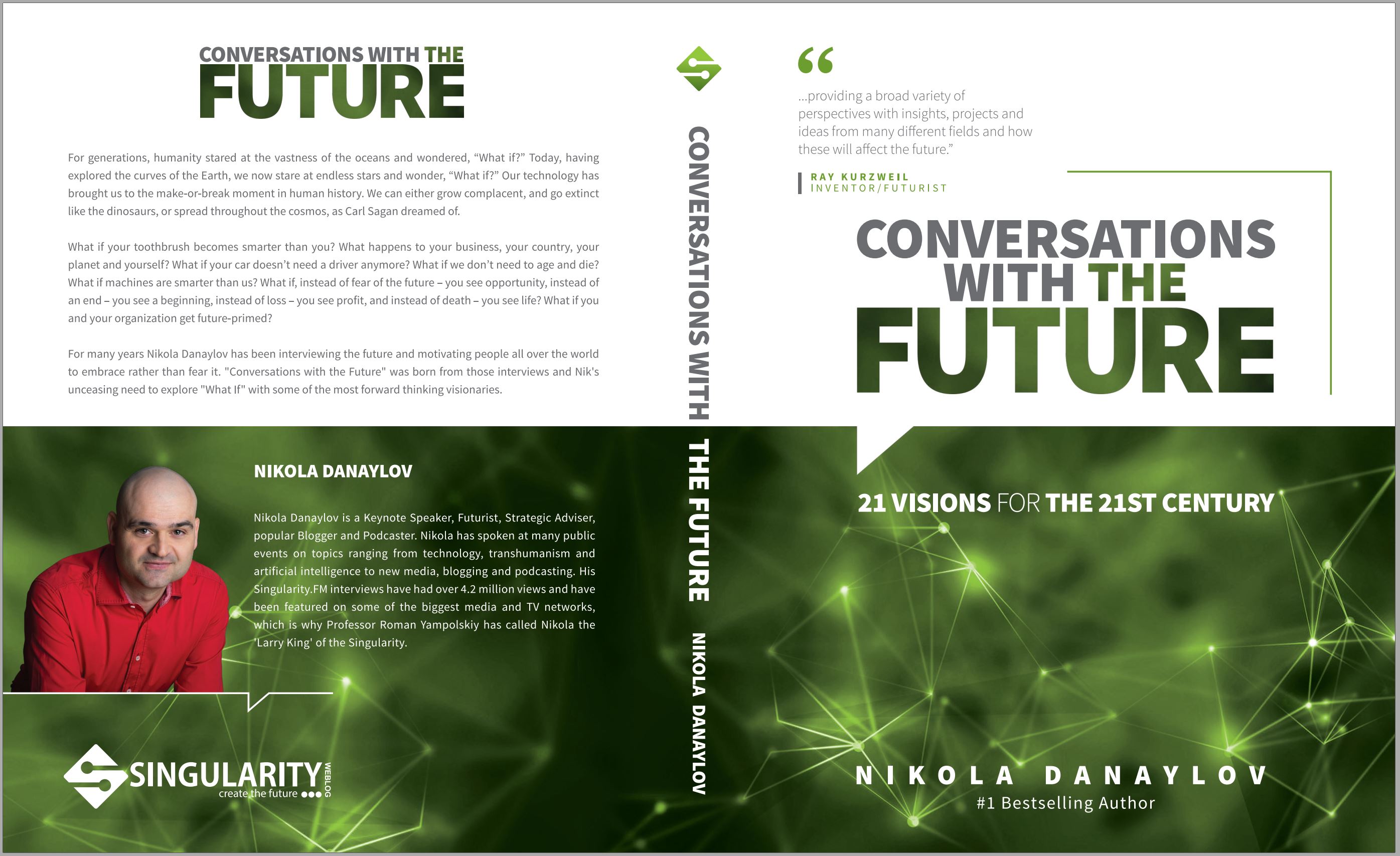 This is the introduction to my bestselling book Conversations with the Future. If you like it, you can buy the book on Amazon: http://amzn.to/2kcseK9
This is the introduction to my bestselling book Conversations with the Future. If you like it, you can buy the book on Amazon: http://amzn.to/2kcseK9
Why the Future adds 0 and what “Conversations with the Future” is about
“If someone needs directions, don’t give them a globe. It’ll merely waste their time. But if someone needs to understand the way things are, don’t give them a map. They don’t need directions; they need to see the big picture.” Seth Godin
If you have ever been to a Hindu temple you probably couldn’t help but notice the Paal Paysam – rice pudding. Legend has it that the tradition of serving Paal Paysam to visiting pilgrims started after a game of chess between an Indian king and the Lord Krishna himself.
 You see, the king was a big chess enthusiast and had the habit of challenging wise visitors to a game of chess. One day a traveling sage was challenged by the king. To motivate his opponent, the king offered any reward that the sage could name. The sage modestly asked just for a few grains of rice in the following manner: the king was to put a single grain of rice on the first chess square and double it on every consequent one.
You see, the king was a big chess enthusiast and had the habit of challenging wise visitors to a game of chess. One day a traveling sage was challenged by the king. To motivate his opponent, the king offered any reward that the sage could name. The sage modestly asked just for a few grains of rice in the following manner: the king was to put a single grain of rice on the first chess square and double it on every consequent one.
Having lost the game, and being a man of his word, the king ordered a bag of rice to be brought to the chess board. Then he started placing rice grains according to the arrangement: 1 grain on the first square, 2 on the second, 4 on the third, 8 on the fourth, 16 on the fifth and then 32, 64, 128, 256, 512, 1024 and so on.
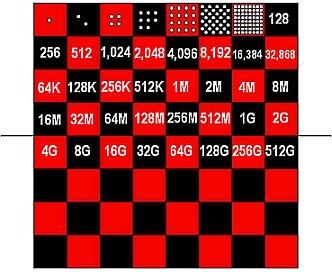 Following the exponential growth of the rice payment, the king quickly realized that he was unable to fulfill his promise because on the twentieth square he would have had to put 1,000,000 grains of rice on the board. On the fortieth square the king would have had to put 1,000,000,000 grains of rice. And, finally on the sixty fourth square the king would have had to put more than 18,000,000,000,000,000,000 grains of rice which is equal to about 210 billion tons. 210 billion tons is allegedly sufficient to cover the whole territory of India with a meter-thick layer of rice. At ten grains of rice per square inch, the above amount requires rice fields covering twice the surface area of the Earth, oceans included.
Following the exponential growth of the rice payment, the king quickly realized that he was unable to fulfill his promise because on the twentieth square he would have had to put 1,000,000 grains of rice on the board. On the fortieth square the king would have had to put 1,000,000,000 grains of rice. And, finally on the sixty fourth square the king would have had to put more than 18,000,000,000,000,000,000 grains of rice which is equal to about 210 billion tons. 210 billion tons is allegedly sufficient to cover the whole territory of India with a meter-thick layer of rice. At ten grains of rice per square inch, the above amount requires rice fields covering twice the surface area of the Earth, oceans included.
It was at that point that the Lord Krishna revealed his true identity and told the king he doesn’t have to pay his debt immediately, but can do so over time. That is why to this day visiting pilgrims are still feasting on Paal Paysam and the king’s debt to Lord Krishna is still being repaid.
***
Our world is a big global chessboard, and we all have a move to play – be it individually – as private citizens, or collectively – as nations, businesses and organizations. Yes, each of us is a tiny little grain of rice, but we live in a world of exponential change where our technology has a huge multiplier effect. So if, for simplicity, all of our civilization is currently equal to 1 then the future will not merely add another 1 so that we end up with civilization of 2. No! We live in a time of exponential technology and disruptive change so the future will add a 0 and we’ll end up with 10, as in 10X.
10X as in ten times more information, coming at us ten times faster, for one tenth of the cost, having ten times bigger impact. And that means each of us will have ten times more opportunities to make a dent in the universe but will also face ten times more dangers, ten times more distractions and personal challenges, and will have to make decisions for 1/10th of the time we had before.
But, of course, the future will not stand still and wait. It will keep adding even more zeros. So what is to be done? Should we try working faster, sifting through even more information and squeezing more output from our primitive biological processors?
As the old Zen saying goes “Meditate for 10 minutes every day. But if you’re really busy do it for at least an hour.” Likewise, speeding up is not the solution to accelerating change. At least not initially. Instead, what we need is the exact opposite. We ought to slow down, re-establish our priorities and come up with a vision for the long run. A vision for our future: be it personally – as individuals, professionally – as entrepreneurs or employees, or collectively – as citizens and members of the human species.
Once we have a vision for our future we can start reverse engineering it and come up with a plan that will take us from where we are today to where we want to be tomorrow. This is what being proactive is all about. In contrast, being reactive is when we are constantly being high-jacked by this or that crisis and the future is something that simply happens to us. Thus, the goal of this book is to motivate you to not let the future happen to you, but to be proactive. And to create the future. As I said above, you need a vision and a plan. But again, do not let the future happen to you!
Now, I am not going to give you the vision or the plan to follow because those will be my vision and my plan, not yours. Plus, there is unfortunately no universal map to the future and despite our amazing technology you can’t buy a GPS to safely guide you there. Instead, I want to invite you to a symposium that I have created just for you. A symposium where in a very relaxed and informal atmosphere you can become a part of our conversations with the future, alongside 20 of the most interesting and accomplished visionaries of our time.
As you will see, each of those 20 visionaries will have a very strong view of what the future would or should be. And, if I may take the liberty of making just one suggestion, beware of embracing a single point of view too tightly. In fact, this is why I have steered away from the concept of the technological singularity in the title of this book. Because, no matter how powerful a concept the singularity is, in the end of the day, it is like a pair of colored glasses in front of our eyes. Or like a single fixed-focal-length prime lens in our photography kit. And yes, it is very useful to put colored glasses and use a prime lens every-once-in-a-while because they help us see the world in a new light, and take a sharper image of it. But it is even more useful to have the freedom to switch your glasses and change your lens with a different focal length so that you can see the world in yet another color and take a picture from a different angle and at a new level of magnification.
If you have previously visited SingularityWeblog.com you will not be surprised by the above arrangement because you probably already know that my blogging name is Socrates. And, just like Socrates of Athens, my aim here is not to teach you anything and tell you what to do. But rather to set up the environment where you will create your own vision of the future and your own plan to make it happen. Thus, at best, if I’ve done my job well, I’d be an intellectual midwife to your giving birth to your own ideas and your own vision of the future. But do not forget that the best way to predict the future is to create it. So do not be a passive observer and let the future happen to you. Find your vision, make a plan and create your future. And, ultimately, my goal here is that you leave our symposium inspired by a sufficiently strong ‘Why’. Because if you uncover your ‘Why’ then you can come up with and endure any ‘How’ that life throws at you to make your dent in the universe and create a better future, better you. So don’t wait to read the story of the future. Instead, create the future and be the author of your own story.
Having said that, if you like what you read, or even if you didn’t, I’d love to hear from you, get to know you better and hopefully find out what you gave birth to after this book. You can also post a picture or video on my Facebook wall at https://www.facebook.com/SingularityWeblog/ or tweet me at @singularityblog.
The best way to start a relationship with me will be to visit Singularity.info and/or subscribe to my Singularity.FM podcast via YouTube and iTunes. There you can see in full all the original interviews this book is based on because these ‘visions’ are not transcripts since here I have had to cut and edit things out to make them fit into a proper book format and size.
I can’t wait to see the future you are going to create!
Sincerely,
Nikola Danaylov
Toronto, Canada

